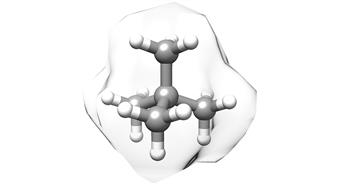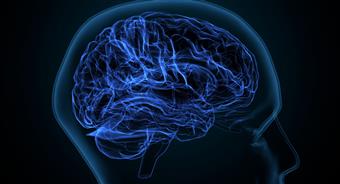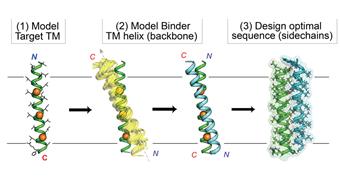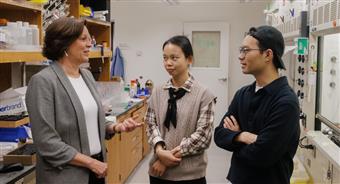
Stumbling Fruit Flies Lead Scientists to Discover Gene Essential for Sensing Joint Position
March 13, 2014
LA JOLLA, CA March 13, 2014 Scientists at The Scripps Research Institute (TSRI) have discovered an important mechanism underlying sensory feedback that guides balance and limb movements.
The finding, which the TSRI team uncovered in fruit flies, centers on a gene and a type of nerve cell required for detection of leg-joint angles. These cells resemble human nerve cells that innervate joints, said team leader Professor Boaz Cook, who is an assistant professor at TSRI, and they encode joint-angle information in the same way.
If the findings can be fully replicated in humans, they could lead to a better understanding of, as well as treatments for, disorders arising from faulty proprioception, the detection of body position.
A report of the findings appears in the March 14, 2014 issue of the journal Science.
A Mystery of Sensation
The proprioceptive sense of how the limbs are positioned is what enables a person, even with eyes closed, to touch the tip of the nose with the tip of a finger an ability easily impaired by alcohol, which is why traffic police often test suspected drunk drivers this way.
Scientists have known that proprioceptive signals originate from so-called mechanosensory neurons, whose nerve ends are embedded in muscles, skin and other tissues. The stretching or compression of these tissues opens ion channels in the nerve membrane, which results in a signal to the brain.
What hasn't been clear is how such a neuron can specialize in sensing just one type of membrane-distorting stimulus such as the angle of a limb joint yet exclude others, such as impact pressures.
In the new study, Cook and two members of his laboratory, first author Bela S. Desai, a postdoctoral fellow, and graduate student Abhishek Chadha, sought to shed some light on this mystery with a study of Drosophila fruit flies. Quickly maturing and easily studied, Drosophila often are analyzed for clues to the genetic underpinnings of basic animal behaviors.
Following the Trail
Cook and his colleagues began with a special collection of Drosophila containing a variety of uncatalogued mutations. The scientists sifted through the collection looking for mutant flies with walking impairments and soon zeroed in on several impaired walkers that turned out to have mutations in the same gene.
The scientists named the gene stumble (stum for short) for the abnormality caused by its absence.
Using a fluorescent tracer, they then localized the expression of stum in normal flies to neurons that lay close to the three main leg joints. Each neuron's input-sensing tendril (dendrite) grew right up to the joints a sign that its evolved function is to detect joint angle.
The researchers also found that the protein specified by the stum gene normally migrates to the tip of each dendrite. With high-resolution microscopy, they imaged each of these tips and observed an extra length branching more or less sideways at the joint.
At ordinary, at-rest joint angles, the relative positions of the main dendrite tip and its side branch stayed more or less the same; however, at extreme joint angles, the pair stretched out. As they did, the level of calcium ions in the neuron rose sharply, suggesting that ion channels had opened and the neuron was becoming active.
Cook noted the results show how a seemingly general mechanosensory, membrane-stretch-sensitive neuron can evolve a specificity for a particular type of proprioceptive signal. It's a nice example of how you can create that specificity from something that only stretches mechanically, he said.
The team is now trying to nail down the specific role of stum proteins in Drosophila and to determine whether the human version of stum which has never been characterized also works in joint angle sensing. Some sensory role for the human version of stum is likely, as the stum gene has been remarkably well conserved throughout animal evolution. Cook and his colleagues were even able to restore some normal walking ability to stum-mutant flies by adding the mouse version of the stum gene. Stum is probably doing the same thing in all animals, he said.
The title of the Science study is The stum Gene Is Essential for Mechanical Sensing in Proprioceptive Neurons.
Neuroscience
More from Scripps
20/04/2024
New copper-catalyzed C-H activation strategy from Scripps Research Two-mode reactions inspired by human detox enzymes offer powerful new tools for drug discover...
12/04/2024
Scripps Research chemists devise easier new method for making a common type of building block for drugs Scientists transform simple linear amines into saturated...
06/04/2024
A simple, inexpensive way to make carbon atoms bind together A Scripps Research team uncovers a cost-effective method for producing quaternary carbon molecules,...
04/04/2024
Developing a vaccine for the zombie drug xylazine Scripps Research chemical biologists design an early proof-of-concept vaccine that could lead to the first...
30/03/2024
How blocking a neural receptor responsible for addiction could reduce alcohol use A Scripps Research team found that a new therapeutic that targets the kappa op...
13/03/2024
New computational strategy boosts the ability of drug designers to target proteins inside the membrane Customized-design approach could streamline the design of...
29/02/2024
Scripps Research scientists reveal how first cells could have formed on Earth New phospholipid discovery brings researchers closer to understanding how primordi...
29/02/2024
How molecular handedness emerged in early biology Scripps Research chemists fill a major gap in origin-of-life theories.
February 28, 2024
LA JOLLA, CA Mole...
22/02/2024
Snaking toward a universal antivenom Scripps Research scientists discovered antibodies that protect against a host of lethal snake venoms.
February 21, 2024
...
06/02/2024
Calibr-Skaggs announces expansion of option and license agreement with AbbVie to develop novel cell therapies for solid tumors and autoimmune diseases
AbbVie...
26/01/2024
Re-energizing mitochondria to treat Alzheimer's disease Scripps Research team restored neuron-to-neuron connections in human cells.
January 25, 2024
LA JO...
24/01/2024
100 years of Science Changing Life: Scripps Research celebrates a century of transforming human health For the last century, institute leaders and renowned scie...
23/01/2024
New technology lets researchers track brain cells' off switches The method could shed light on what goes awry in numerous brain conditions when neurons ar...
09/01/2024
Three decades of giving: Announcing the Calibr-Skaggs Institute for Innovative Medicines The ALSAM Foundation, founded by the Skaggs family, provides lasting g...
04/01/2024
Life science entrepreneur Gene Lay joins Scripps Research Board of Directors Lay, founder of the global biotech company BioLegend, brings invaluable experience ...
21/12/2023
Taming a plant-derived toxin Scripps Research team modifies the traditional poison picrotoxinin for potential neurological drugs and anti-parasite treatments. ...
19/12/2023
Scripps Research Executive Vice President Eric Topol gives TED talk on transformative power of AI in medicine Topol provides an overview of how AI models can i...
13/12/2023
New AI-powered algorithm could better assess people's risk of common heart condition Early detection of atrial fibrillation can reduce the risk of stroke an...
07/12/2023
Nanoparticle flu vaccine design shows promise in early tests Scripps Research-designed vaccine could provide broad, enduring protection against influenza A str...
16/11/2023
Numerous Scripps Research scientists named Highly Cited Researchers Clarivate's annual, global list represents researchers who have demonstrated significant...
07/11/2023
Multiple sclerosis drug invented at Scripps Research slows long-term devastating disease progression Late-breaking data reinforces the effectiveness and safety ...
05/10/2023
Keren Lasker named a 2023 Moore Inventor Fellow The prestigious award will support Lasker's inventive research in membraneless organelles and their applica...
22/09/2023
Michael Bollong named a 2023 Amgen Young Investigator The prestigious award will support Bollong's research identifying new molecular targets and therapeuti...
09/09/2023
Philip Dawson receives 2024 American Chemical Society National Award Dawson is honored with the Arthur C. Cope Late Careers Scholar Award for his foundational c...
07/09/2023
Scripps Research chemists devise a method for C-H activation of alcohols The method represents a new toolkit for making drugs and other compounds.
September 06...
31/08/2023
Scripps Research receives $1.5M to surveil infectious disease threats in wastewater Bill & Melinda Gates Foundation award to support the development of multi-pa...
16/08/2023
How cold temperatures trigger the brain to boost appetite Scripps Research scientists' discovery could lead to new weight loss and metabolic health treatmen...
08/08/2023
Human antibody that targets carfentanil, fentanyl and related opioids reverses overdose effects in preclinical study Scripps Research-developed antibody therapy...
04/08/2023
How sensory neurons impact the gut Scripps Research scientists show that the receptor PIEZO2 in sensory neurons controls gut motility and transit time, which a...
26/07/2023
AbbVie and Calibr Expand Strategic Collaboration to Advance Several Preclinical and Early-stage Clinical Assets The expanded strategic collaboration will advan...
23/07/2023
Scripps Research scientists develop AI-based tracking and early-warning system for viral pandemics Machine-learning system effectively predicts emergence of pro...
19/07/2023
Monitoring T cells may allow prevention of type 1 diabetes Scripps Research study shows that analyzing T cells in blood samples could be used to select at-risk ...
19/07/2023
Scripps Research mourns passing of leading organic chemist Albert Eschenmoser Eschenmoser pioneered key reactions in synthetic chemistry and shaped the understa...
15/06/2023
Scripps Research awarded $46.8 million by NIH to promote human health through innovative translational science and training The Translational Institute is harne...
13/06/2023
Scripps Research's Danielle Grotjahn named 2023 Pew Scholar in the Biomedical Sciences The award will support Grotjahn's study of how cells assemble the...
31/05/2023
Crossing the ring: new method enables C-H activation across saturated carbocycles Scripps Research chemists add another powerful tool to their molecular editin...
24/05/2023
Scripps Research develops behind-the-scenes tool for better biomedical data discovery The new resource makes datasets more discoverable for life science communi...
19/05/2023
Scripps Research neuroscientist Hollis Cline elected to American Academy of Arts and Sciences Cline is recognized for her discoveries about the role of sensory ...
19/05/2023
Scripps Research's Skaggs Graduate School awards doctoral degrees to 31st graduating class Commencement ceremony will be livestreamed via Zoom and on instit...
13/05/2023
A better route to benzocyclobutenes, sought-after building blocks for drugs Scripps Research chemists devise a new, C-H activation-based method for the synthesi...
09/05/2023
Renowned Scripps Research professor Jeffery Kelly elected to National Academy of Sciences Kelly's groundbreaking work on protein misfolding has led to thera...
28/04/2023
Mirror-image molecules pave new path for cancer drug discovery By comparing how mirror image versions of small molecules impact clusters of proteins, Scripps R...
22/04/2023
How alcohol consumption contributes to chronic pain A Scripps Research team showed how both alcohol intake and alcohol withdrawal can lead to increased pain and...
21/04/2023
Xin Jin receives dual awards to study autism risk genes in neurodevelopment Major grants from the National Institutes of Health and California Institute for Reg...
20/04/2023
Trim the sugar: New HIV vaccine design improves immune response Scripps Research vaccine candidate headed for clinical trials.
April 19, 2023
LA JOLLA, CA A...
18/04/2023
Therapeutic can seek and destroy potent opioid to treat overdoses Scripps Research chemists developed a new biologic to work against the synthetic opioid carfen...
07/03/2023
How heavy alcohol consumption increases brain inflammation The findings by a Scripps Research team point toward a potential new drug target for treating alcohol...
02/03/2023
Scientists find human antibodies that can block multiple coronaviruses including SARS-CoV-2 Results from a Scripps Research and UNC team pave the way for a vacc...
28/02/2023
$10 million grant funds Scripps Research Alcohol Research Center through its 50th year The five-year grant supports research into the neurobiology of alcohol us...
28/02/2023
Immune system drug shows promise in treating alcohol use disorder, a Scripps Research clinical trial reports Scientists at Scripps Research found that apremilas...
 Stumbling Fruit Flies Lead Scientists to Discover Gene Essential for Sensing Joint Position
Stumbling Fruit Flies Lead Scientists to Discover Gene Essential for Sensing Joint Position 























